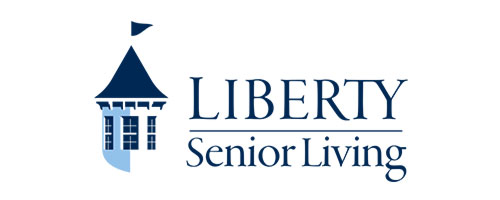Glossary of industry terms
Active adult community
Planned community of single-family homes, mobile homes or condominiums that are purchased by adults 55 years or older.
Active aging
Individuals and populations who live as fully as possible within the dimensions of wellness (emotional, environmental, vocational, physical, spiritual, intellectual, social).
Activities of Daily Living (ADL)
Bathing, dressing, grooming, eating, toileting and moving from one place to another.
Adult day care
Community-based centers offering social, recreational and health-related services to meet the needs of functionally and/or cognitively impaired adults who can no longer be left at home alone during the day.
Age-restricted
(also known as age-qualified)
Housing for people 55 years and older.
Age-targeted
Housing aimed at those 55 years and older, but not restricted to them.
Aging in place
Living at home or in the community.
Area Agency on Aging
At the local level, area agencies identify community and social service needs of older adults and subcontract with other organizations to provide the services.
Assisted living residences
A residence that provides meals, housekeeping, transportation and individualized personal care and health services for activities of daily living (but not nursing care).
Assistive technology
(also known as adaptive devices)
Any service or tool that helps a person perform activities, such as a walker, hearing aid, special telephones or elevated toilet seats.
Board and care home
(also known as adult care home or adult group home)
Residences offering personal care services for 3-16 people, such as meals, supervision and transportation, often provided by the owner or manager.
Caregiver
A person who takes care of an individual with physical or mental limitations. Often caregivers are unpaid family members.
Chronic care
Care and treatment for individuals whose health problems are long term, provided by a rehabilitation facility or nursing home.
Chronic disease
(also known as chronic illness)
A condition, such as diabetes or arthritis, that requires a person to seek help with various activities. Characteristics include: permanency, residual disability, requires rehabilitation, or requires a long period of supervision or care.
Cognitive impairment
Loss of intellectual ability, such as disorientation as to people, places or time; loss of memory; and/or impairment of one’s ability to reason. Mild impairment is a risk factor for Alzheimer’s disease.
Community-based services
Supportive services designed to help older people live independently in their own homes. Examples are seniors centers, delivered meals or congregate meals site, visiting nurses or home health aides.
Congregate meals
Meal programs providing free or low-cost nutritional meals in an easily accessible community location where older adults congregate. Many also provide daily activity and social programs.
Continuing Care Retirement Community (CCRC)
A planned retirement community offering multiple levels of care (independent living, assisted living, skilled nursing care) housed in different areas of the same community. CCRCs provide residential services (meals, housekeeping, laundry), social and recreational services, health care services, personal care and nursing care.
Continuum of care
The spectrum of specialized health, rehabilitative and residential services.
Disability
The limitation of normal physical, mental or social activity of an individual. There are varying types (functional, occupational, learning), degrees (partial, total) and durations (temporary, permanent) of disability.
Elder abuse
An intentional or negligent act that causes harm or a serious risk of harm to a vulnerable adult.
Elder care
Health-related services, such as rehabilitation or skilled nursing, and personal care or social services provided at home and in residential care facilities, including assisted living facilities and nursing homes.
Exercise
Physical activity intended to develop physical fitness, such as strength, cardiovascular or flexibility exercise, challenging walking and therapeutic exercise.
Functional movement
General term to describe exercises that are relevant to specific functional activities such as eating, grooming, rising from a chair or reaching a cabinet. Higher levels of functional activity include specific tasks, such as swinging a tennis racquet.
Geriatrics
The study of the prevention and management of diseases associated with the aging process.
Gerontology
The study of the aging processes from many disciplines, including anthropology, biology, history, sociology, psychology, political science and demography.
Healthy aging
(also called successful aging)
A lifelong process of preserving and improving health and wellness, independence and quality of life.
Home and community-based services
Supportive services designed to help older people live independently in their own homes. Examples are seniors centers, transportation, delivered meals or congregate meal sites, visiting nurses or home health aides.
Independent living communities
Age-restricted multi-family rental or owned properties with central dining facilities, housekeeping, transportation, and social and recreational activities.
Instrumental Activities of Daily Living (IADL)
Everyday tasks required for home management, such as shopping, cooking, housekeeping and financial management.
Intergenerational
Occurring among different generations; for example, children and older adults, or children, parents and grandparents.
Life expectancy
The average number of years people in a given population can expect to live.
Long Term Care (LTC)
A range of medical, nursing, custodial, social and community services required by a person who has disabilities or chronic care needs. Services may be provided in a home or in residential facilities.
Naturally Occurring Retirement Communities (NORCs)
Communities generated as people age and stay in their own homes or apartments or move to neighborhoods with a high density of older adults.
Nursing home
(also known as long-term care facility)
Residential facility that provides a room, meals, help with activities of daily living, recreation and general nursing care to people who are chronically ill or unable to take care of their daily living needs.
Physical activity
Daily activities that increase energy expenditure, such as golf, gardening, walking, raking leaves and housework.
Physical fitness
An overall measure of physical attributes including cardiovascular endurance, muscular strength and endurance, body composition and flexibility.
Rehabilitation
The coordinated use of medical, social, educational and vocational measures for training or retraining individuals disabled by disease or injury to the highest possible level of functional ability.
Respite care
Services that enable caregivers, such as family members, to have respite (take a break from) caregiving responsibilities.
Seniors apartments
Rental properties usually restricted to adults 55 years or older.
Seniors centers
Community-based locations that serve as meal sites, screening clinics, and recreational centers, and provide social activities and services and educational opportunities for older adults.
Therapeutic exercise
Exercises that are designed to help with rehabilitation from an injury or chronic condition, often determined by a physical or occupational therapist or a highly trained personal trainer.
Wellness
A dynamic state of physical, mental, and social well-being; a lifestyle that recognizes the importance of nutrition, physical fitness, stress reduction and self-responsibility.































